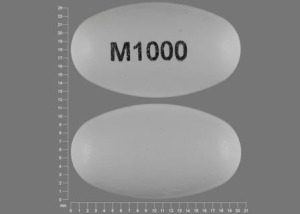Glumetza Dosage
Generic name: METFORMIN HYDROCHLORIDE 500mg
Dosage form: tablet, film coated, extended release
Drug class: Non-sulfonylureas
Medically reviewed by Drugs.com. Last updated on Mar 27, 2024.
Adult Dosage and Administration
- The recommended starting dose of GLUMETZA is 500 mg orally once daily with the evening meal.
- Increase the dose in increments of 500 mg every 1 to 2 weeks on the basis of glycemic control and tolerability, up to a maximum of 2,000 mg once daily with the evening meal.
- Patients receiving metformin hydrochloride (HCl) may be switched to GLUMETZA once daily at the same total daily dose, up to 2,000 mg once daily.
- Swallow GLUMETZA whole and never crush, cut or chew.
- If a dose of GLUMETZA is missed, instruct patients not to take two doses the same day and to resume their usual dose of GLUMETZA with the next schedule dose.
Recommendations for Use in Renal Impairment
- Assess renal function prior to initiation of GLUMETZA and periodically thereafter.
- GLUMETZA is contraindicated in patients with an estimated glomerular filtration rate (eGFR) below 30 mL/minute/1.73 m2.
- Initiation of GLUMETZA in patients with an eGFR between 30 to 45 mL/minute/1.73 m2 is not recommended.
- In patients taking GLUMETZA whose eGFR later falls below 45 mL/minute/1.73 m2, assess the benefit risk of continuing therapy.
- Discontinue GLUMETZA if the patient’s eGFR later falls below 30 mL/minute/1.73 m2.
Discontinuation for Iodinated Contrast Imaging Procedures
Discontinue GLUMETZA at the time of, or prior to, an iodinated contrast imaging procedure in patients with an eGFR between 30 and 60 mL/minute/1.73 m2; in patients with a history of liver disease, alcoholism or heart failure; or in patients who will be administered intra-arterial iodinated contrast. Re-evaluate eGFR 48 hours after the imaging procedure; restart GLUMETZA if renal function is stable.
Frequently asked questions
- How long does metformin take to work?
- When is the best time to take metformin?
- Can you take metformin without food?
- Why does Metformin smell like fish?
- How does metformin work?
- What is the safest diabetes medication?
- Why does metformin cause diarrhea?
More about Glumetza (metformin)
- Check interactions
- Compare alternatives
- Pricing & coupons
- Reviews (4)
- Drug images
- Latest FDA alerts (18)
- Side effects
- During pregnancy
- Generic availability
- FDA approval history
- Drug class: non-sulfonylureas
- Breastfeeding
- En español
Patient resources
Other brands
Glucophage, Glucophage XR, Fortamet, Riomet, Riomet ER
Professional resources
Other brands
Glucophage, Glucophage XR, Fortamet, Riomet
Related treatment guides
See also:
Further information
Always consult your healthcare provider to ensure the information displayed on this page applies to your personal circumstances.


